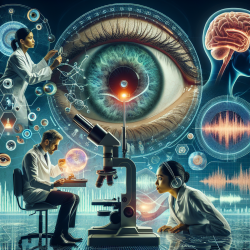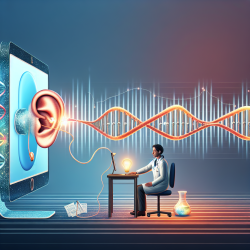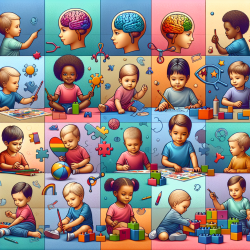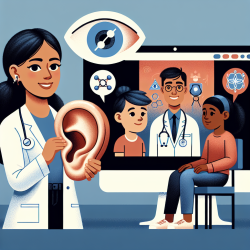Introduction
In the realm of speech-language pathology, particularly when working with children, making data-driven decisions is crucial for effective therapy outcomes. A fascinating intersection exists between vision science and speech-language pathology, offering insights that can enhance therapeutic strategies. The 15th Asia-Pacific Conference on Vision (APCV) 2019 provided a wealth of information that can be leveraged to improve speech-language therapy outcomes, especially for children. This blog explores how findings from vision research can be integrated into speech-language pathology practices to foster better outcomes for children.
The Importance of Vision in Speech-Language Pathology
Vision plays a critical role in the development of language and communication skills in children. Visual cues are integral to understanding and producing speech, as they help in the recognition of facial expressions and the reading of social cues. Therefore, any advancements in vision research can have significant implications for speech-language pathology.
Key Findings from APCV 2019
The APCV 2019 conference highlighted several key findings in vision research that are relevant to speech-language pathology:
- Visual Processing and Perception: Understanding how children process visual information can inform therapeutic approaches. For instance, research on how visual attention and perception develop can help tailor interventions that support language acquisition in children with visual processing disorders.
- Integration of Multisensory Information: The ability to integrate visual and auditory information is crucial for effective communication. Studies presented at APCV 2019 explored how children combine these sensory inputs, providing insights into designing interventions that enhance multisensory integration.
- Neuroplasticity and Vision: The conference emphasized the brain's ability to adapt and reorganize in response to visual stimuli. This neuroplasticity can be harnessed in therapy to improve language skills in children with speech and language disorders.
Implementing Vision Research in Therapy
Incorporating vision research into speech-language pathology can be transformative. Here are some strategies to consider:
- Assessment Tools: Utilize vision-based assessment tools to identify visual processing issues that may affect language development. This can help in creating personalized therapy plans.
- Multisensory Approaches: Develop therapy sessions that integrate visual and auditory stimuli, enhancing the child's ability to process and respond to complex sensory information.
- Technology Integration: Use technology, such as virtual reality or eye-tracking software, to engage children in interactive and visually stimulating therapy sessions.
Encouraging Further Research
While the findings from APCV 2019 are promising, ongoing research is essential to deepen our understanding of the interplay between vision and language development. Speech-language pathologists are encouraged to collaborate with vision scientists to explore new therapeutic techniques and tools.
Conclusion
The insights gained from vision research, such as those presented at the APCV 2019, offer valuable opportunities to enhance speech-language pathology practices. By integrating these findings into therapy, practitioners can create more effective interventions that improve outcomes for children. As we continue to explore the connections between vision and language, the potential for innovative therapies will only grow.
To read the original research paper, please follow this link: The 15th Asia-Pacific Conference on Vision (APCV), 2019.










